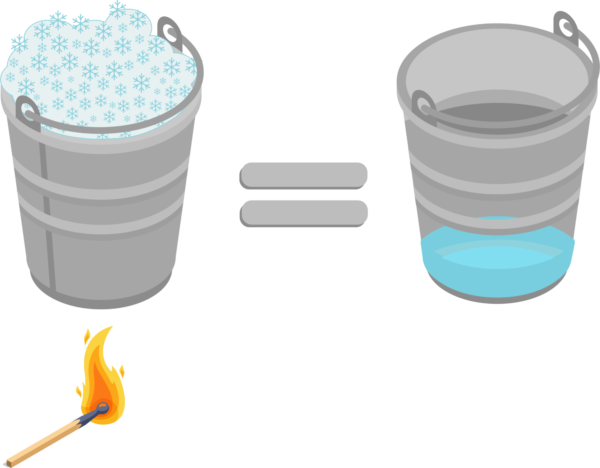A measure of the water content of snow.

To measure how much Snow Water Equivalent is in a bucket of snow, you could melt the snow and measure how much water it produces.
Snow Water Equivalent (SWE) tells us how much the snow weighs but in terms of a standard unit of water. SWE is recorded in inches or centimeters – it is the height of water that would result if you melted the snow down to its liquid state. For example, picture a mid-winter storm that fills a bucket with 18” of cold, fluffy snow. If you brought the bucket inside, the snow would melt down to some amount at the bottom of the bucket. Let’s say 1” of liquid water is left in your bucket. So in this case, that 18” storm produced 1” of snow water equivalent. You might take that same bucket outside during a wet spring snowstorm, and this time it gets filled with only 6” of snow. But when you melt the wet, heavy snow down, it also produces 1” of water in the bucket, or 1” of snow water equivalent. And lastly, you put the bucket outside during a rain storm and it collects 1” of water. The key point here is that all three storms would produce the same amount of loading on a snowpack – the same amount of water fell from the sky. The height of snow may vary widely depending on snow density, but snow water equivalent tells us how much weight, or water content, is in the snow.